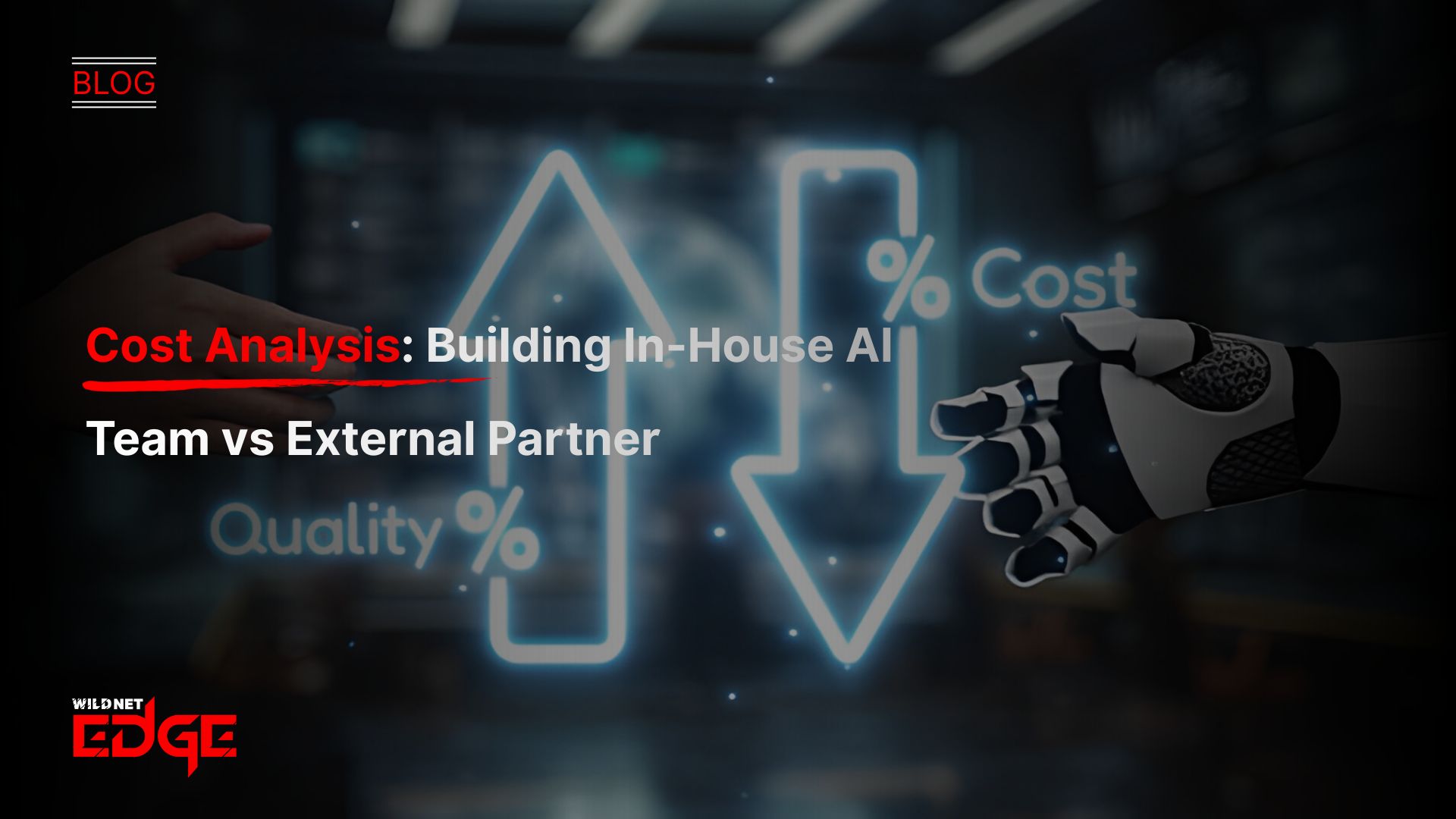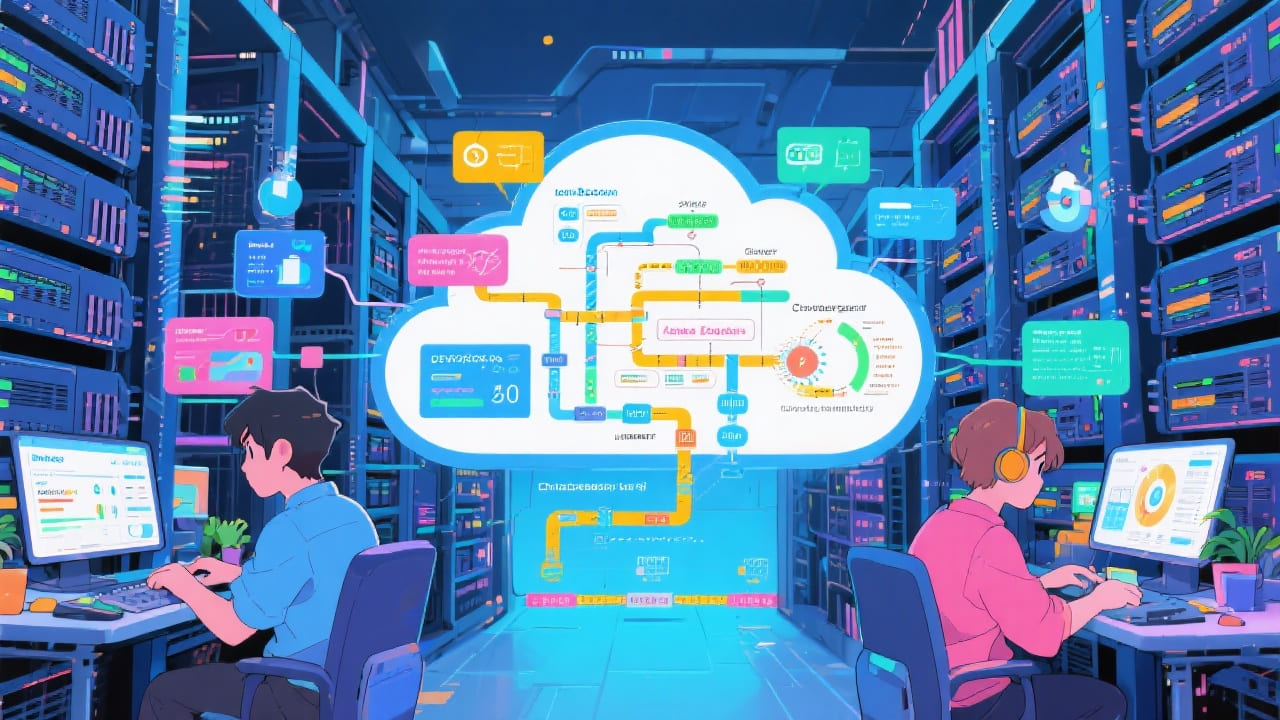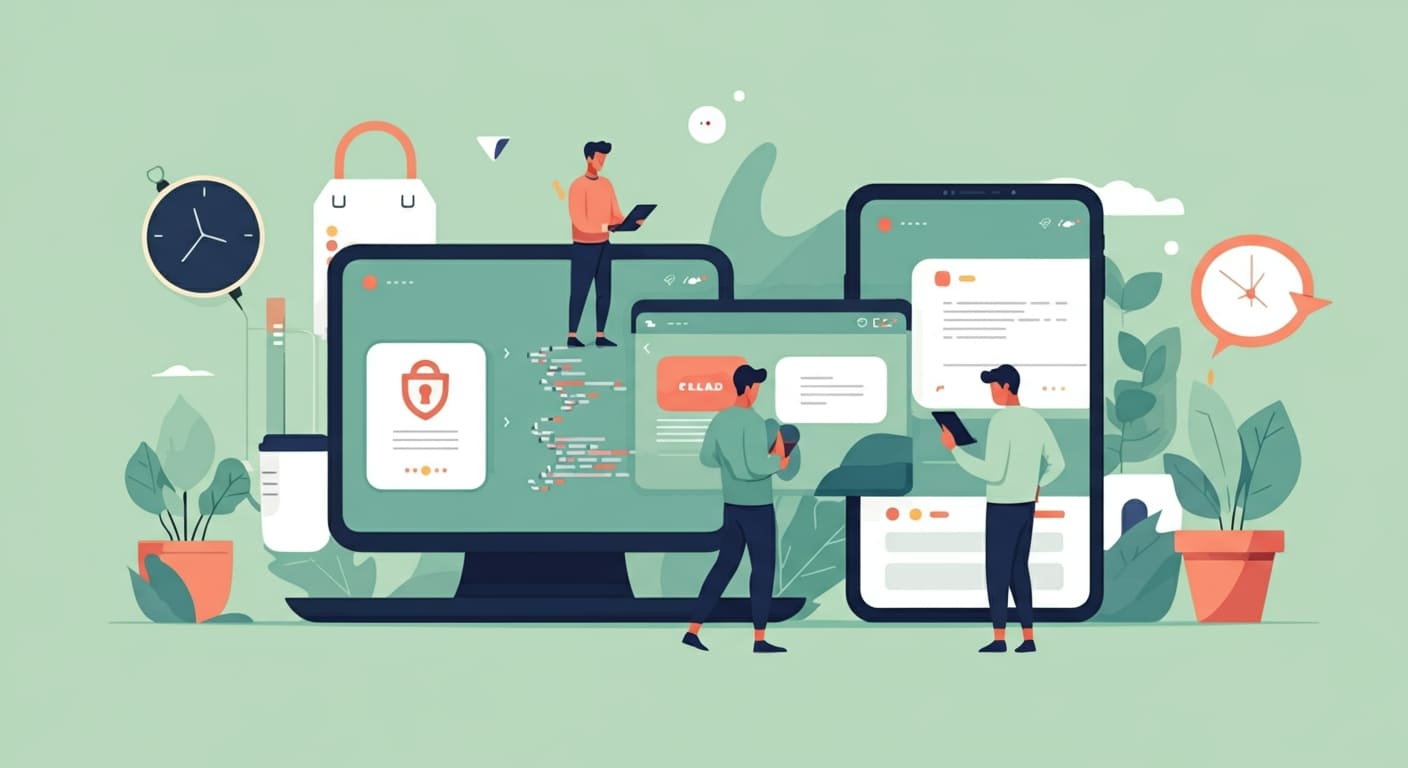TL;DR
This article compares the costs of building an in-house AI team versus outsourcing to external experts. It breaks down the high fixed expenses of in-house teams—salaries, hiring, tools, and training against the flexible, lower upfront costs of outsourcing through project-based or retainer models. By evaluating the Total Cost of Ownership over time, it helps businesses make data-driven decisions based on budget, speed, and expertise needs.
In today’s AI-driven landscape, cost efficiency can make or break innovation. Many companies eager to adopt artificial intelligence face a critical decision whether to build an expensive in-house team or explore AI outsourcing cost advantages. Outsourcing not only reduces upfront expenses but also gives access to specialised global talent, faster delivery, and scalable engagement models, all while maintaining quality and flexibility.
Understanding the Core Cost Components
To make an accurate AI project cost comparison, we need to dissect the expenses associated with each model over the typical lifecycle e.g., 1-3 years.
In-House AI Team Cost Breakdown
The creation of an internal team brings about a variety of direct and indirect costs:
- Recruitment Costs: The acquisition of a first-rate AI talent is indeed a very tough job. Besides, to hire a specialized recruiter, the fees may be around 20-30% of the first-year salary for each employee.
- Salaries & Benefits: Among the AI/ML engineers, data scientists, and MLOps specialists there are very high expectations regarding the payment, sometimes the demand is around $150k-$250k+ in the metropolitan areas, plus a very attractive package of employee benefits (health insurance, retirement contributions, etc.).
- Tools & Infrastructure: The creation of AI requires various tools and fast computing including specialized software licenses (for example, data labeling tools, ML platforms), and very fast hardware (GPU-enabled workstations/servers) and cloud computing.
- Training & Development: The AI sector is rapidly innovating and changing. Continuous training is akin to an ongoing cost since it is the only method that keeps your team skill up to date.
- Management Overhead: The technical leaders (e.g., Head of AI, Lead Data Scientist) will need to be hired who have enough experience to manage, supervise, and ensure productivity in the team.
- Office Space & Equipment: As long as the overhead costs of full-time employees remain, they are normal expenses.
The in-house AI team cost breakdown reveals significant upfront investment and high, fixed ongoing expenses.
AI Outsourcing Cost Breakdown
Working with an external agency usually means dealing with various cost structures:
- Agency Fees: This is the main expense, and its structure is generally as follows:
- Time & Materials: The hourly or monthly rate billed for the dedicated resources engaged in your project. Rates differ greatly according to the agency’s location (onshore vs. offshore) and the level of expertise.
- Fixed Price Project: A predetermined cost for a well-defined project scope (e.g., building a particular AI model). It calls for thorough preliminary planning.
- Retainer: A regular payment for the continued right to a team or specific services (e.g., model maintenance).
- Internal Management Time: Though the time and effort required is less than that of managing an in-house team, you still need some internal resources (e.g., a product manager or technical lead) to take care of the vendor relationship, set the requirements, and check the deliverables. This is a very important part of the overall cost of AI outsourcing.
Outsourcing generally offers lower upfront costs and converts fixed overhead into variable project expenses.
The Total Cost of Ownership Perspective
A simple comparison of annual salary vs. agency fees is misleading. You must consider the TCO over a realistic period.
- Year 1: In-house is almost always significantly more expensive due to recruitment and high initial salaries. Outsourcing offers faster ramp-up at a lower initial outlay.
- Year 2-3: If the in-house team is fully utilized and highly productive, its average cost might start to become competitive with a large, ongoing outsourcing engagement. However, factors like employee turnover (requiring new recruitment costs) and the need for continuous training add to the in-house TCO. Outsourcing provides flexibility to scale costs up or down based on project needs.
A realistic AI project cost comparison using TCO often reveals that outsourcing remains highly competitive, especially for projects with variable scope or duration. Detailed financial modeling is crucial. This level of planning is often integrated into comprehensive custom software development processes.
Factors Beyond Direct Cost
The decision at hand is not solely determined by the financial aspect. The best option is mainly affected by the following strategic considerations:
- Speed to Market: Development and launch are almost always quicker with outsourcing, since there is an instant access to a ready team to start with. It takes months for in-house hiring.
- Access to Specialized Expertise: Outsourcing can provide you with instant access to niche AI skills such as deep learning for computer vision, which might be extremely difficult or time-consuming to hire internally. Moreover, expert partners who are offering AI development services pricing usually have specialists readily available.
- Control vs. Flexibility: The in-house setting ensures total direct control over the team and process. In contrast, outsourcing provides the flexibility to quickly adjust the scale of the resources up or down, depending on the project requirements.
- Risk Management: Outsourcing can pass on some of the execution risk to the vendor (especially in fixed-price or outcome-based models). Building in-house runs the risk of hiring errors or project delays caused by internal factors.
Cost Analysis in Action: Case Studies
Case Study 1: A Startup Choosing Outsourcing for Speed & Cost
- The Challenge: A seed-funded startup needed to build an AI-powered MVP quickly but couldn’t afford Bay Area salaries or the 6+ month hiring timeline for an in-house team.
- The Decision: They opted to outsource to an experienced offshore agency. The AI outsourcing cost (project-based) was roughly 40% of the estimated first-year cost of hiring a comparable US-based team.
- The Outcome: They launched their MVP in 5 months, secured their next funding round based on early traction, and continued using a hybrid model (small internal core team + outsourcing for specialised modules).
Case Study 2: An Enterprise Choosing In-House for Core IP
- The Challenge: A large insurance firm identified AI-driven risk modeling as a core, long-term competitive differentiator and wanted complete control over the IP and talent.
- The Decision: They committed to a multi-year investment in building an internal AI center of excellence. The in-house AI team cost breakdown was substantial, including hiring PhD-level data scientists and building dedicated infrastructure.
- The Outcome: After a significant upfront investment and 18-month ramp-up, they developed proprietary models that significantly outperformed off-the-shelf solutions, justifying the long-term strategic investment. This often involves building significant internal platforms, akin to complex enterprise product development cost calculations.
Our Expertise & Technology
We offer flexible engagement models backed by deep AI expertise.
- AI/ML Frameworks: TensorFlow, PyTorch, Scikit-learn
- Cloud AI Platforms: AWS SageMaker, Azure Machine Learning, Google AI Platform
- Programming Languages: Python, R
- Engagement Models: Staff Augmentation, Managed Teams, Project-Based Delivery
Conclusion
The decision between building an in-house AI team and outsourcing is a complex equation with no single right answer. A thorough analysis comparing the full in-house AI team cost breakdown against the cost of AI outsourcing, considering TCO and critical factors like speed and expertise, is essential. For many businesses, particularly those needing specialised skills quickly or seeking budget predictability, outsourcing offers a compelling strategic advantage.
Ready to explore the most cost-effective path for your AI initiatives? At Wildnet Edge, our AI-first approach provides flexible solutions. Whether you need expert augmentation or end-to-end project delivery for platforms like SaaS development services, we offer transparent pricing and world-class talent to accelerate your AI journey.
FAQs
Hidden costs include lengthy recruitment cycles (opportunity cost), high employee turnover rates in the competitive AI market (repeated recruitment costs), continuous training expenses, expensive software/hardware tools, and significant management time required to lead specialized technical teams.
The best way is through a paid discovery or scoping phase with potential vendors. Providing a detailed requirements document allows agencies to give a more accurate fixed-price quote or a reliable estimate for a Time & Materials engagement. Vague requirements lead to vague (and risky) estimates.
Yes, hourly rates for skilled AI engineers in locations like India or Eastern Europe can be 40-70% lower than equivalent talent in the US or Western Europe. This makes the cost of AI outsourcing offshore very attractive, but requires strong communication and project management processes.
This depends. An in-house team immersed in your business can develop deep domain knowledge over time. However, a specialized outsourcing partner focused on your specific industry (e.g., an AI agency specializing in healthcare) might bring deeper, pre-existing domain expertise faster than you could build it internally.
Highly complex, novel AI research and development might eventually benefit from a dedicated in-house R&D team. However, implementing well-understood AI applications (like recommendation engines or predictive maintenance) is often faster and more cost-effective via outsourcing, leveraging an agency’s existing expertise and potentially pre-built components.
Yes, this is a very common and often optimal strategy. Use outsourcing to launch quickly and validate your AI initiatives. As you achieve success and secure more funding, you can gradually hire internal talent and transition knowledge and ownership from the external partner.
Choosing in-house when you lack funding or management capacity can lead to slow progress and burnout. Choosing outsourcing without proper due diligence or clear communication can lead to project delays, poor quality, or a solution that doesn’t meet business needs. The biggest risk is failing to achieve your strategic AI goals effectively.

Nitin Agarwal is a veteran in custom software development. He is fascinated by how software can turn ideas into real-world solutions. With extensive experience designing scalable and efficient systems, he focuses on creating software that delivers tangible results. Nitin enjoys exploring emerging technologies, taking on challenging projects, and mentoring teams to bring ideas to life. He believes that good software is not just about code; it’s about understanding problems and creating value for users. For him, great software combines thoughtful design, clever engineering, and a clear understanding of the problems it’s meant to solve.
 sales@wildnetedge.com
sales@wildnetedge.com +1 (212) 901 8616
+1 (212) 901 8616 +1 (437) 225-7733
+1 (437) 225-7733































